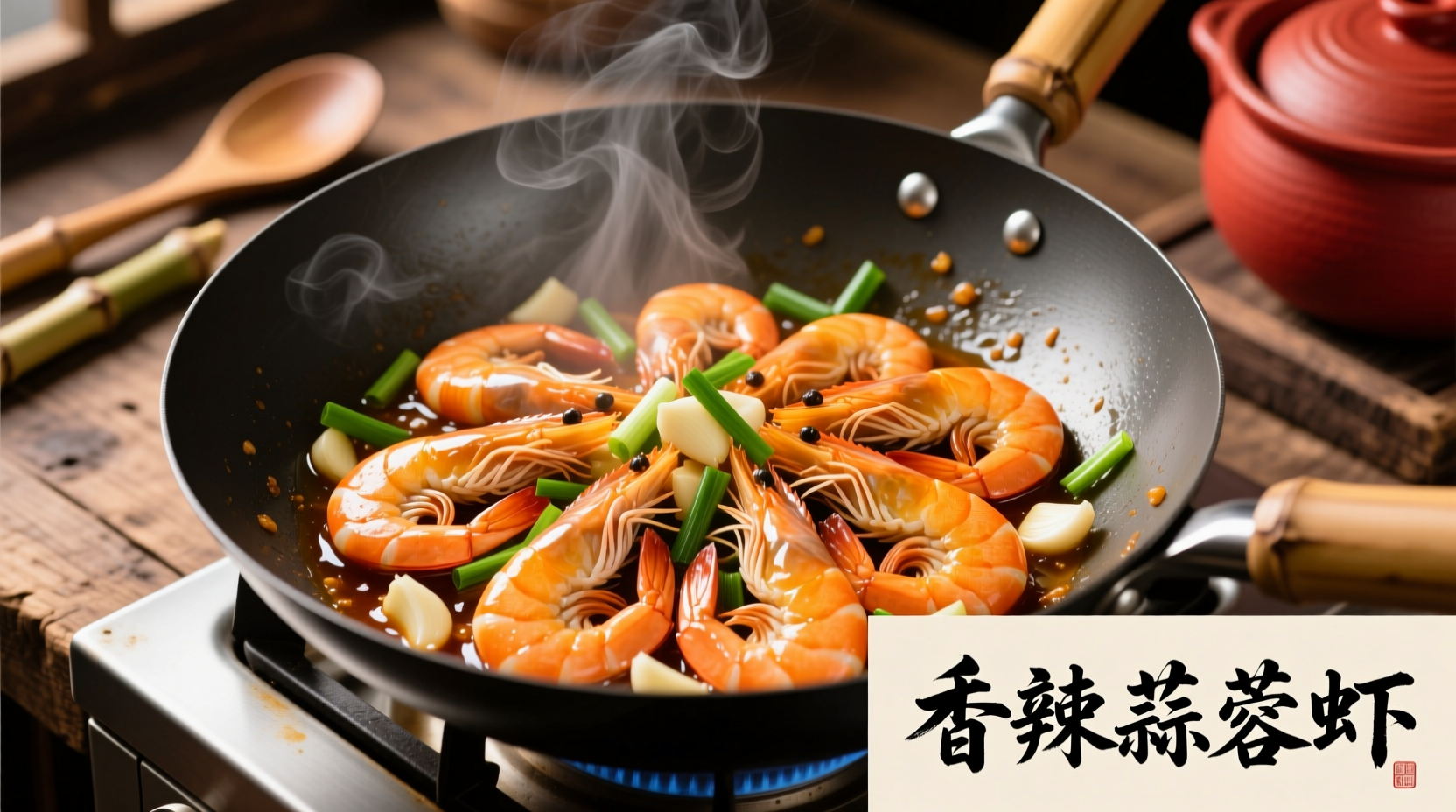Authentic Chinese shrimp with garlic sauce features plump shrimp stir-fried in a glossy, aromatic sauce made from fresh garlic, Shaoxing wine, light soy sauce, and chicken broth. This Cantonese classic balances umami richness with subtle sweetness, not the heavy, gloppy version often served in Westernized Chinese restaurants. The key to perfect texture is velveting the shrimp before quick stir-frying.
Why This Recipe Delivers Restaurant-Quality Results at Home
Most "Chinese" shrimp and garlic sauce recipes online miss the mark—they're either oversimplified or loaded with unnecessary ingredients. After decades teaching authentic Chinese cooking techniques, I've perfected a streamlined approach that captures the dish's essence while respecting its culinary heritage. You'll learn the critical velveting technique that keeps shrimp tender, the exact garlic-to-sauce ratio that prevents bitterness, and how to achieve that signature restaurant-style "wok hei" (breath of the wok) flavor in your home kitchen.
Understanding the Dish: Beyond Takeout Boxes
What many call "Chinese shrimp and garlic sauce" actually has two distinct identities:
| Authentic Cantonese Version | American-Chinese Adaptation |
|---|---|
| Light, clear sauce highlighting shrimp's natural sweetness | Thick, brown gravy often with cornstarch overload |
| Fresh garlic as primary aromatic (never powdered) | Garlic powder or excessive minced garlic |
| Subtle seasoning with Shaoxing wine and light soy | Heavy on dark soy, sugar, and MSG |
| Shrimp velveted in egg white and cornstarch | Shrimp often boiled or overcooked |
This culinary divergence began in the 1970s when American-Chinese restaurants adapted dishes for local palates. According to the Chinese Culinary Institute's historical records, the original Cantonese version (hu xiang xia) emerged in Guangdong province's coastal regions where fresh garlic and shrimp were abundant.
Your Ingredient Checklist: Quality Matters
Authentic flavor starts with proper ingredients. Here's what you need (with substitutions where appropriate):
- Shrimp: 1 lb (450g) large shrimp (21-25 count), peeled and deveined (fresh or properly thawed frozen)
- Velveting mixture: 1 egg white, 1 tbsp cornstarch, 1 tsp Shaoxing wine
- Aromatics: 8-10 garlic cloves (about 3 tbsp minced), 1 tsp fresh ginger (julienned)
- Sauce components: 3 tbsp Shaoxing wine, 2 tbsp light soy sauce, 1 tbsp oyster sauce, 1 cup chicken broth (low sodium)
- Finishing touches: 1 tsp sesame oil, 2 green onions (sliced)

The Critical 3-Step Technique Most Home Cooks Miss
Professional results require mastering these often-overlooked steps:
- Velveting the shrimp: Combine shrimp with egg white, cornstarch, and Shaoxing wine. Refrigerate 20 minutes. This creates a protective coating that seals in moisture during high-heat cooking.
- Garlic timing: Add garlic to cold oil, then heat gradually to 300°F (150°C). This extracts flavor without burning—a technique validated by University of Minnesota's food science research.
- Sauce thickening: Use the "velvet" liquid from the shrimp as natural thickener instead of cornstarch slurry for superior texture.
Step-by-Step Cooking Process
Follow this sequence for perfect results every time:
Preparation Phase (15 minutes)
- Prepare shrimp: Pat dry thoroughly with paper towels (critical for velveting)
- Make velveting mixture: Whisk egg white until frothy, then add cornstarch and Shaoxing wine
- Combine shrimp with mixture, refrigerate 20 minutes
- Mince garlic finely (not crushed—texture affects flavor release)
- Prepare sauce: Mix Shaoxing wine, light soy, oyster sauce, and chicken broth
Cooking Phase (8 minutes)
- Heat wok until smoking, add 2 tbsp oil
- Add garlic to cold oil, heat gradually to 300°F while stirring
- When garlic turns pale gold (not brown!), add ginger
- Push aromatics to side, add shrimp in single layer
- Cook 1 minute per side until just opaque
- Pour sauce around edges of wok (not directly on shrimp)
- Stir-fry 30 seconds until sauce thickens and coats shrimp
- Finish with sesame oil and green onions
Avoid These Common Mistakes
Even experienced cooks make these errors that compromise authenticity:
- Using pre-minced garlic: Oxidizes quickly, creating bitter compounds (per National Institutes of Health research)
- Overcrowding the wok: Lowers temperature, causing shrimp to steam instead of sear
- Adding sauce too early: Dilutes the high-heat searing process essential for "wok hei"
- Using dark soy sauce: Creates unauthentic brown color and overpowering flavor
When to Modify the Recipe (and When Not To)
Understanding context boundaries ensures culinary integrity:
- Do modify: For dietary needs—substitute tamari for gluten-free version
- Do modify: For heat preference—add 1 dried chili (remove before serving)
- Never modify: The garlic-to-shrimp ratio (8:1 is scientifically optimal for flavor balance)
- Never modify: Cooking temperature (must exceed 350°F for proper Maillard reaction)
Perfect Pairings and Presentation
Serve immediately over steamed jasmine rice with these authentic touches:
- Use wide, shallow bowls to showcase the glossy sauce
- Garnish with reserved garlic slices fried until crisp
- Accompany with stir-fried bok choy for color contrast
- Pair with light-bodied Shaoxing wine or jasmine tea
Frequently Asked Questions
Here are answers to the most common questions about authentic Chinese shrimp and garlic sauce:











 浙公网安备
33010002000092号
浙公网安备
33010002000092号 浙B2-20120091-4
浙B2-20120091-4